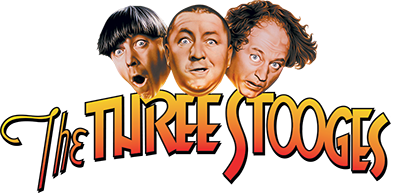Production Information
Title: Rumpus in the Harem
Studio: Columbia
Short Number: 171
Release Date: June 21, 1956
Running Time: 15:56
“P.S. – If you don’t get this note, let me know and I’ll write you another.”
Short Take
The Stooges play the proprietors of the Cafe Casbah Bah, a Middle Eastern restaurant. One morning, Moe and Larry are awakened by their crying sweethearts, who are in need of money to pay off a bad debt. While attempting to prepare a meal for customers Hassan Ben Sober (Vernon Dent) and the Gin of Rummy (George J. Lewis), The Stooges try to think of a way to raise the needed cash. In the interim, they discover a plan that their hungry customers are hatching. These two thieves are attempting to rob the tomb of Rootentooten, which contains a priceless diamond, but they discover that the Emir of Schmow (Johnny Kascier) has already gotten his hands on the diamond. The two plotters start wailing and are thrown out of the restaurant. The Stooges then attempt to retrieve the diamond themselves, as there is a $50,000 reward at stake.
The Stooges arrive at the Emir of Shmow’s palace, all three dressed as Santa Claus. They then manage to acquire the diamond and make a quick exit, but not before dealing with a burly guard.
Rumpus in the Harem Cast & Crew
| Directed by | Jules White |
|---|---|
| Produced by | Jules White |
| Written by | Felix Adler |
| Starring | Moe Howard Larry Fine Shemp Howard Joe Palma Vernon Dent George J. Lewis Diana Darrin Helen Jay Ruth Godfrey White Harriette Tarler Suzanne Ridgeway Johnny Kascier |
| Cinematography | Ray Cory |
| Edited by | Harold White |
Rumpus in the Harem Trivia
- The working title was Diamond Daffy
- It is a rework of the 1949 film Malice in the Palace
- This was the first of the four “phony Shemp” shorts and shows the most new footage with Joe Palma.
- Fake Shemp, or simply Shemp, became known as someone who appears in a film as a replacement for another actor or person. Their appearance is disguised using methods such as heavy make-up (or a computer-generated equivalent), filming from the back, dubbing in audio and splicing in past footage from the original actor’s previous work, or using partial shots of the actor. The concept is named after Shemp Howard, whose sudden death in 1955 necessitated the use of these techniques to finish the films to which he was already committed. Once somewhat commonplace throughout the 20th century, the use of Fake Shemps to emulate living people are now forbidden under Screen Actors Guild contracts, largely because of a lawsuit filed by Crispin Glover that determined that the method violates the original actor’s personality rights. The method continues to be used in cases, such as Shemp’s, where the original actor is deceased and permission from the deceased actor’s estate is granted.
Production Notes
As Shemp Howard had already died, for these last four films (Rumpus in the Harem, Hot Stuff, Scheming Schemers and Commotion on the Ocean), Columbia utilized supporting actor Joe Palma to be Shemp’s double


